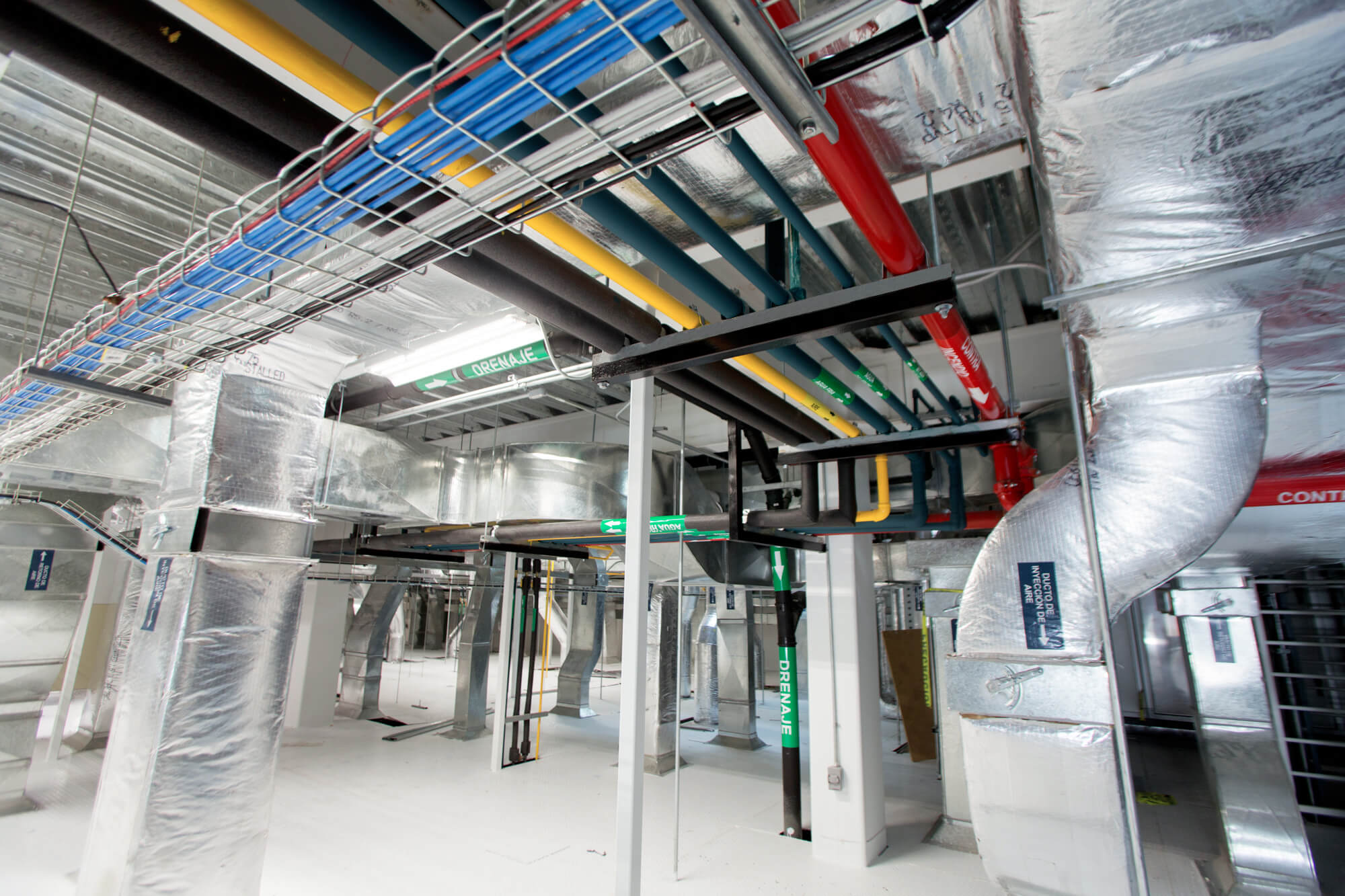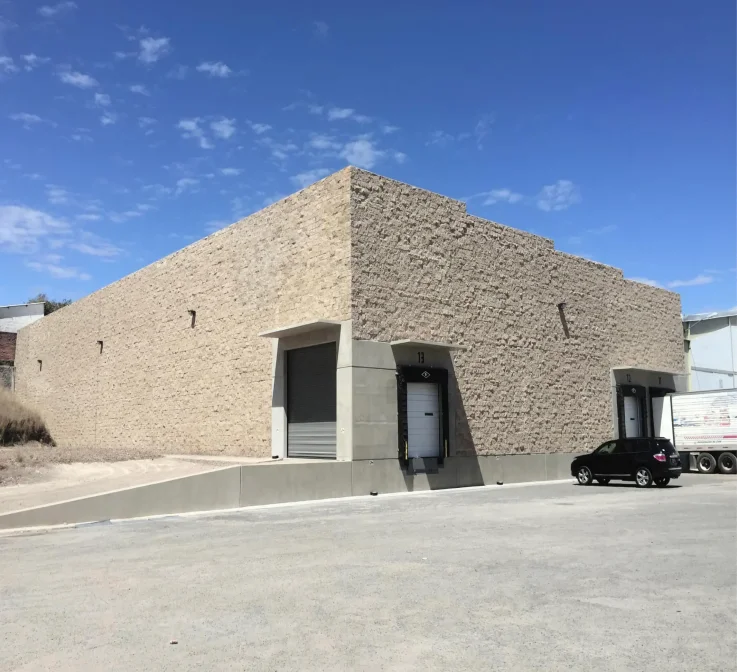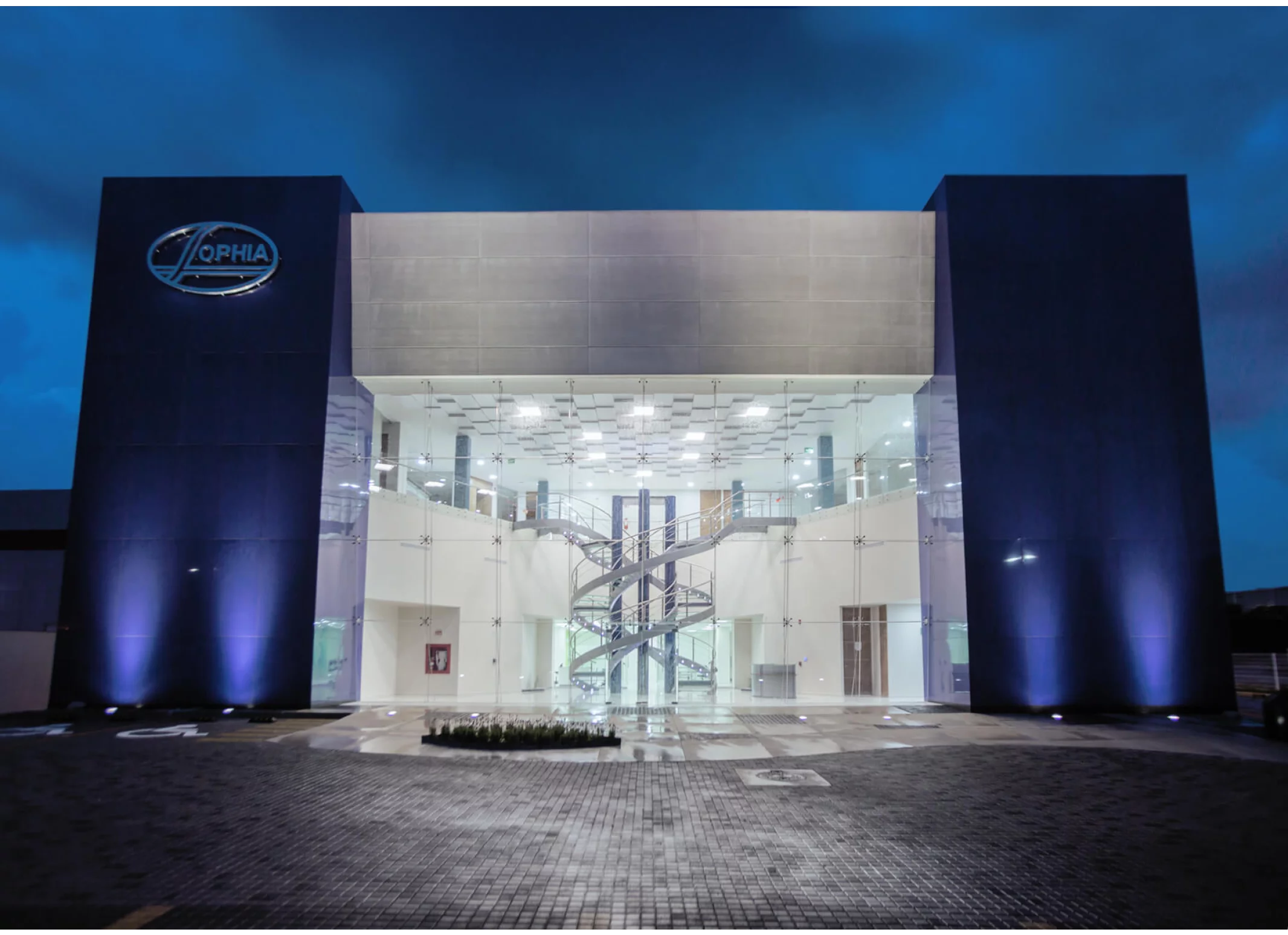
Sophia Research Center CIS
The challenge: Pharmaceutical research and development laboratory building, dedicated to the development of new products before their commercialization.
Pharmaceutical research and development laboratory building, dedicated to the analysis of new products before their commercialization. The program is developed on a plot of land of 5,556.00 M2 and houses offices, meeting rooms, laboratories, clean areas, formulation areas and even product packaging.
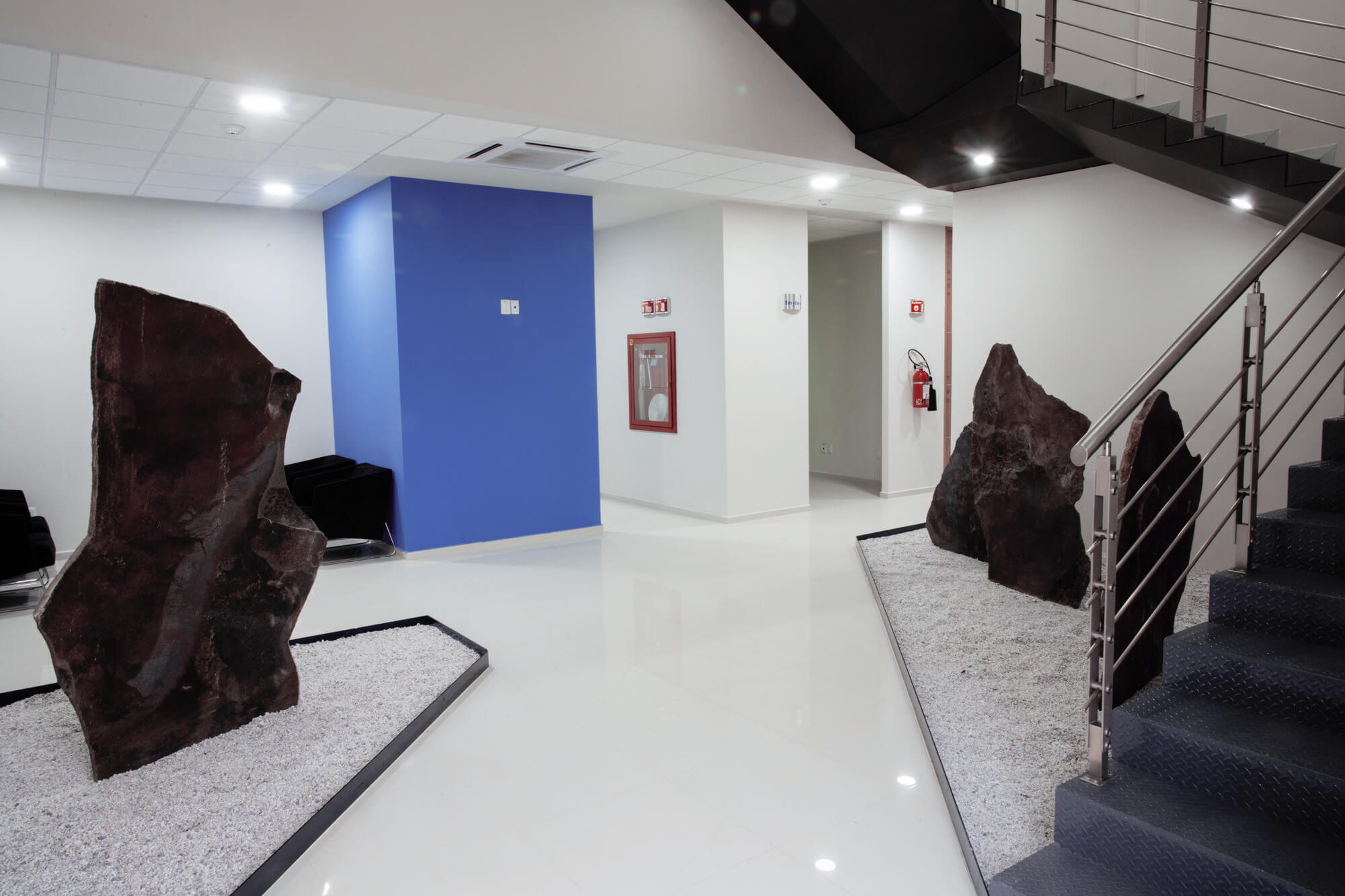
The concept of the building is based on the simple idea of ​​representing the human genome (DNA) in its spaces, translated in an abstract way into its main elements, mainly using it for the main staircase, in which it is translated as two concentric helical stairs that They "tangle" creating the effect of a DNA chain, and to reinforce the concept, RGB LED lights with different color scenarios were installed on each step. The staircase is formed by two rolled metal rafters, supported in the center by four round columns; For the steps, translucent glass was chosen, using tempered glass with PVB film that holds two 9mm thick pieces, creating an effect of transparency and technology. For its finishes, automotive paint was applied to give an extra highlight to its structural elements.

The laboratory program is developed in two independent buildings, housing separate research and development laboratories, and Biotechnology laboratories, in the latter, due to the necessary conditions, independent service networks were installed, to guarantee their isolation, cleanliness, and protection conditions. against emergencies of a biological, bacterial, or natural nature.
This project completely breaks with the concept of a research laboratory, and manages to make it a pleasant, aesthetic and, above all, functional space for the processes carried out inside.

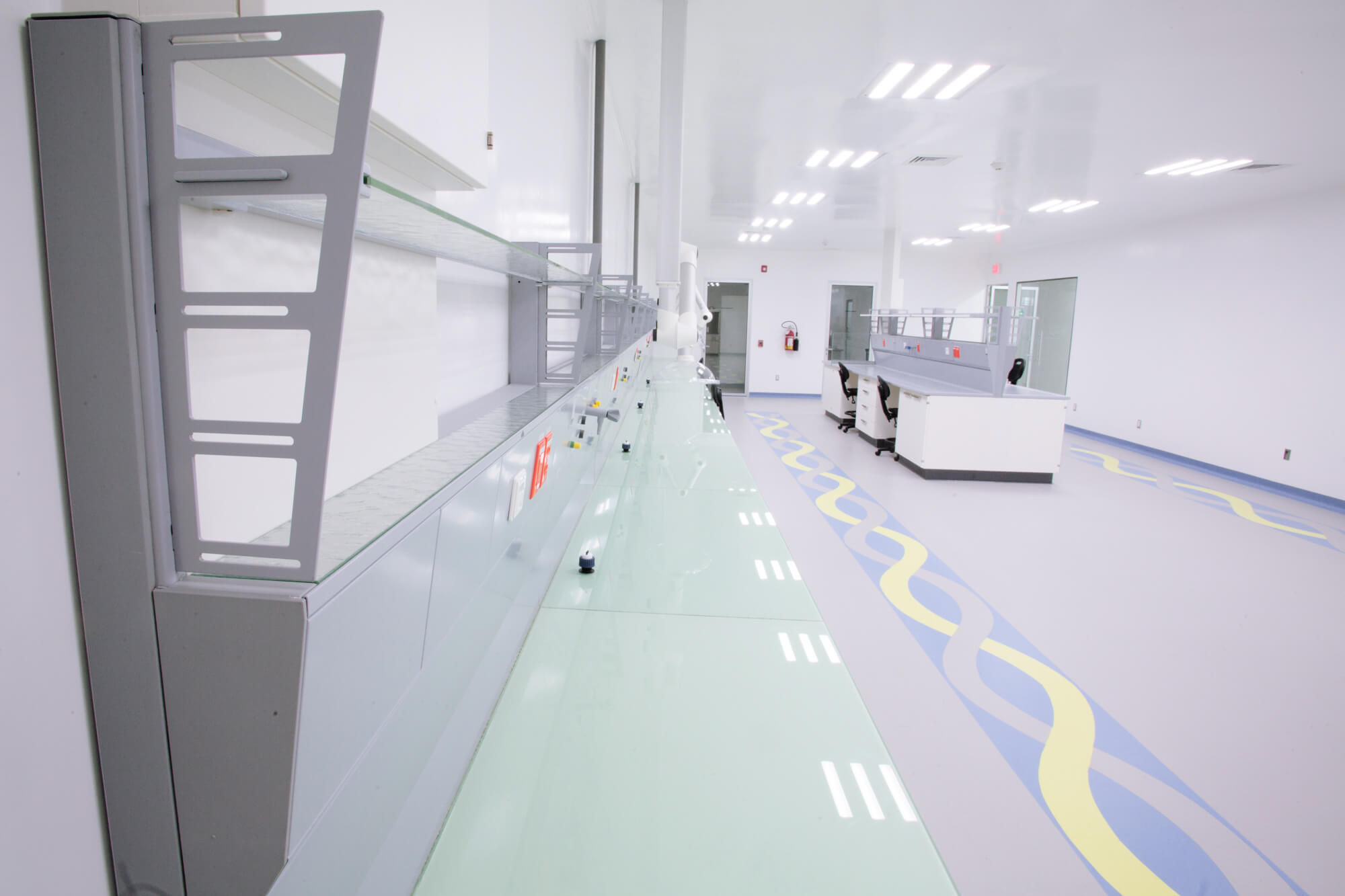

The Project, Design and Construction of this building adhered to the Official Mexican STANDARD NOM-059-SSA1-2013, Good Medicine Manufacturing Practices. To the International Standard USA FDA (American Food and Drug Administration), Standard CFR21, parts 210 and 211 and by ISPE (International Society of Pharmaceutical Engineering) guides in “Control for Critical Environments, HVAC Design Concepts. Passing all certifications.
